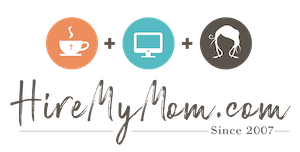Going Remote: How to Write Invoices that Get You Paid Every Time
Remote employment has become increasingly popular in recent years, with more and more individuals opting to work from the comfort of their own homes. However, with this shift in the traditional work setting comes the responsibility of handling administrative tasks, such as writing invoices. As a remote worker, it is crucial to understand the importance of creating well-written and detailed invoices that will ensure you get paid on time, every time.
Understanding the Basics of Invoices
An invoice serves as a professional record of the work done and the amount owed by the client. It typically includes essential information like your contact details, the client’s details, a clear description of the services or products provided, the agreed-upon rates, and the payment terms. Invoices can be created using various software or templates, making the process simpler and more efficient. By mastering the basics of invoices, remote workers can ensure a smooth payment process and maintain a professional image with their clients.
Essential Elements to Include in Your Invoice
Firstly, make sure to include your contact details, including your full name, address, phone number, and email address. Next, provide the client’s information, including their name, company, address, and contact information. Clearly state the services or products provided and provide a detailed description of the work completed. Include the agreed-upon rates or pricing structure, as well as any additional fees or expenses. Finally, don’t forget to include the payment terms, such as the due date and acceptable payment methods. For more specifics, check out our guest blog from Nicole Garrison.
Common Mistakes to Avoid When Writing an Invoice
One common mistake is failing to provide a detailed description of the services or products provided. Without a clear explanation, clients may question the charges or be unsure of what they are paying for. Another mistake to avoid is not setting clear payment terms. Make sure to specify the due date and acceptable payment methods to avoid any misunderstandings. Additionally, double-check for any errors or inaccuracies before sending out your invoice.
Best Practices for Prompt Payment Collection
When it comes to collecting payment for your remote work, promptness is key. To ensure timely payment, there are a few best practices you can follow. Establish clear payment terms from the start of your working relationship with the client. Specify the due date and acceptable payment methods to avoid any confusion or delays. Consider offering incentives for early payment, such as a small discount or bonus. This can motivate clients to pay promptly and strengthen your professional relationship. Lastly, be proactive in following up on unpaid invoices. Send gentle reminders and be persistent in your pursuit of payment.
What tips do you have for invoices? Share it with our audience!
